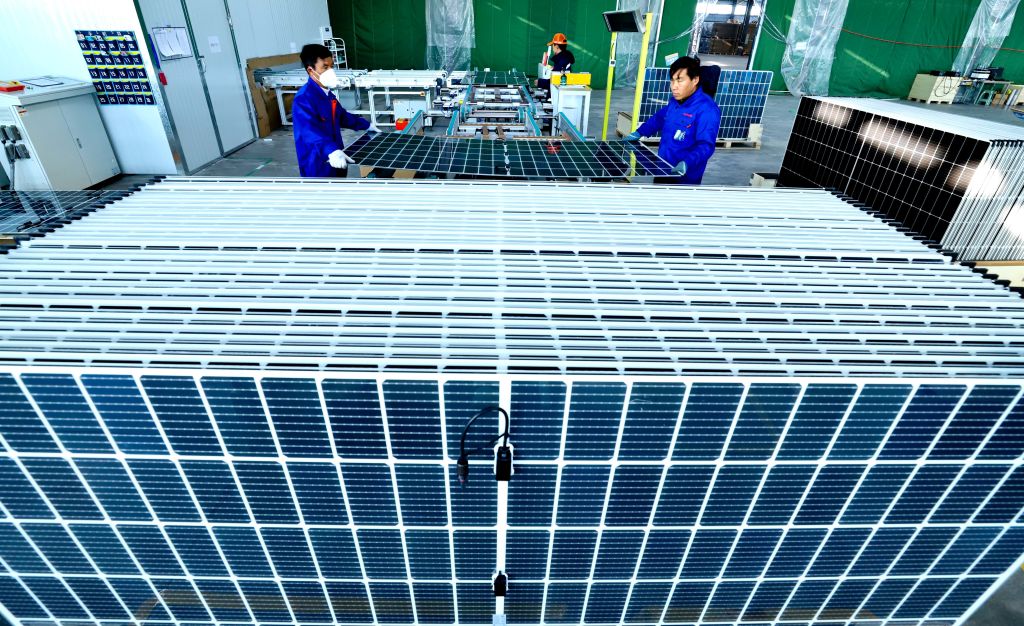At the United Nations climate conference that concluded last month in Dubai, the world’s countries pledged to triple global renewable energy capacity by 2030. The renewables target received less attention than other, more contentious goals pursued at the conference, such as scaling down fossil fuel production and funding reparations for the nations suffering the worst climate impacts. After all, the costs of renewable technology like solar have plummeted in recent years, making it cheaper than coal and natural gas in the vast majority of cases.
But a new report from the International Energy Agency lays bare the challenges that lie ahead as the world tries to accelerate this trend. If countries implement current policies, the agency projects that global renewables capacity will increase by a factor of 2.5, falling short of the 11,000-gigawatt tripling target set at the so-called COP28 conference in Dubai. In part this is because high interest rates and supply chain disruptions in wealthy countries like the U.S. are stifling the growth of renewables — particularly offshore wind.
“The tripling renewables target will not be easy by any means,” said Maria Pastukhova, a senior policy advisor at the climate think tank E3G’s office in Berlin, Germany. “It’s not simple, but it’s been seen as absolutely urgent and economically beneficial to most countries. It’s a race against time that we know we have to win.”
The report is the first to conduct a country-by-country analysis of renewables expansion since COP28. Overall, it found countries have installed more than 3,600 gigawatts in renewable energy capacity so far. Under current policies, that number is expected to reach a bit more than 9,000 gigawatts by 2030, leaving a roughly 2,000 gigawatt gap to reach the 11,000 gigawatt target.
China is expected to be responsible for about half of the growth in the coming years. The country, which has long been a leader in solar installations, commissioned as much solar last year as the whole world did in 2022. The United States, the European Union, Brazil, and India are also expected to double their renewables portfolios by 2028.
Still, despite these bright spots, meeting the COP28 target requires significant additional policy interventions, according to the energy agency. The challenges are particularly acute in the wind industry, which has been hit hard by inflation, high interest rates, and supply chain disruptions. Over the last two years, central bank interest rates have risen from less than 1 percent to more than 5 percent, making it harder for renewables developers to finance projects. Inflation has pushed the cost of wind turbines and other components higher, adding to the crunch facing developers. On top of this, many wind developers signed contracts to install wind turbines before the COVID-19 pandemic, at a time when interest rates were stable and equipment was easy to procure. The past few years have upended expectations that those economic tailwinds would continue.
As a result, wind turbine manufacturers in North America and Europe have suffered financial losses for nearly the last two years. In 2023, wind developers postponed or canceled about 15 gigawatts of installations in the U.S. and the United Kingdom. Auctions for wind projects are receiving few or no bids in Rhode Island and the Gulf of Mexico. In New York, state regulators are planning to accept new bids for canceled projects and are now attempting to tie prices to inflation.
Even if more favorable economic conditions emerge for renewables in the coming years, developers face another major challenge, particularly in the U.S. and Europe: long permitting timelines. In order to build solar and wind projects and the enabling infrastructure needed to connect their power to the grid, developers have to work with regulators to receive a variety of operating and environmental permits. In Europe, these permits can take anywhere from 5 to 15 years, Pastukhova said.
“The bureaucratic procedures hamper development,” she said. “That does not help the business.”
Pastukhova said that even as wealthy countries solve domestic challenges to accelerate renewables deployment, they must also finance projects in developing countries. Parts of Africa and South Asia have tremendous potential for solar, but without funding to invest in the infrastructure needed to support renewables and access to technology, some countries may be left behind in the energy transition.
“The most important challenge for the international community is rapidly scaling up financing and deployment of renewables in most emerging and developing economies,” said Fatih Birol, the International Energy Agency’s executive director, in a press release. “Success in meeting the tripling goal will hinge on this.”




